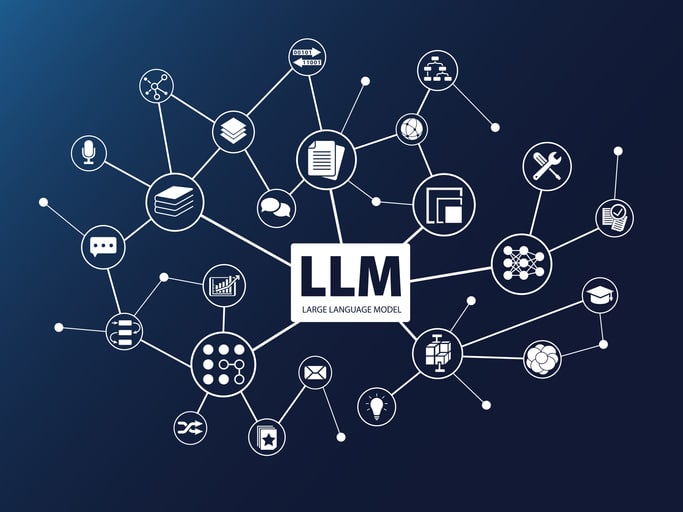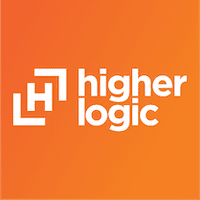Understanding AI Assistants, AI Chatbots, and AI Agents
The capabilities of AI are ever expanding. Gain a solid understanding of AI terms and what they mean.

Introduction to AI: Defining LLMs, RAG, Assistants, Agents, and Chatbots
It feels like not long ago that Artificial Intelligence (AI) wasn’t something regularly discussed by the general public. Now, it’s radically changing how life and business are done.
But just as with the dawn of home PCs, the Internet, and social media, we find ourselves suddenly confronted with new language and terminology to learn.
In this article, I’m going to define a few things to help you gain a better understanding of AI and the evolving landscape. Specifically, I’ll talk about large language models (LLMs), retrieval-augmented generation (RAG), as well as AI assistants, AI agents, and AI chatbots.

How Does AI Work and What is an LLM?
You might already know what an LLM is, but just in case: A Large Language Model (LLM) is a type of AI model that uses machine learning to understand and generate human language. LLMs are trained on vast amounts of text data and use deep learning techniques to predict and generate text. They can perform a variety of language-related tasks, such as:
- Text generation: Creating coherent and contextually relevant text based on a given prompt.
- Translation: Converting text from one language to another.
- Summarization: Condensing long pieces of text into shorter summaries.
- Question answering: Providing answers to questions based on the information they have been trained on.
LLMs are what allow tools like Microsoft CoPilot, Perplexity, and countless others to answer questions, generate content, and do the other amazing things you see them do.
Multimodal Large Language Models (MLLMs), meanwhile, represent an exciting advancement in AI, integrating multiple types of data such as text, images, audio, and video. Unlike traditional LLMs that primarily handle text, MLLMs can process and generate content across different modalities, enabling more comprehensive and contextually rich interactions.
For instance, GPT-4V is an MLLM that can understand and generate text based on visual inputs, such as describing the content of an image. This opens new possibilities – for example if someone refers to a chart in a research report as “Figure 3,” the information in the chart can impart meaning to the document.
What is Retrieval-Augmented Generation (RAG)?
Retrieval-Augmented Generation (RAG) is a technique that enhances the capabilities of LLMs by integrating information retrieval into the generation process.
Think of an LLM like a textbook published in 2020. It was created at a certain point in time with the knowledge available. But if you’re researching the history and current state of vaccines, you’re going to need information about developments in the last 5 years. And even if you have a textbook published in 2024 (since textbooks, like LLMs, are updated periodically), you might be looking at a Biology textbook and you might also want to reference a History textbook, the personal account of a scientist working on vaccine research, or a news story published yesterday about a scientific breakthrough.
How do you tap into new information, or specific information, to get what you need without having to start entirely from scratch? That’s where RAG comes in.
Retrieval-augmented generation (RAG) combines the generative power of LLMs with real-time data retrieval. Here’s how it works:
- Retrieval: When a user query is received, the system first retrieves relevant documents or data from a chosen external knowledge base (for example, an industry-specific online community). This ensures that the information used is up-to-date and specific to the query.
- Augmentation: The retrieved information is then combined with the user’s query. This augmented input is fed into the LLM, providing it with additional context and details
- Generation: The LLM generates a response based on both the original query and the augmented information. This helps produce more accurate and contextually relevant answers
RAG is particularly useful in scenarios where the LLM’s training data might be outdated or insufficient for specific queries. By leveraging authoritative (and even private) sources, RAG can improve the reliability and relevance of the generated responses.
In practice…
You could ask ChatGPT a question related to industry-specific information that only exists in your organization’s private online community, but it won’t be able to answer correctly – it only has access to public information.
If, however, you use something like an AI chatbot in your online community that’s been set up to pull from the information stored there, it can give highly relevant answers.
Watch Our Recent Webinar!
Higher Logic CEO Rob Wenger walks through applications for AI assistants and agents for generating smart responses and powering seamless automation. Click the play button to watch!
What Are AI Assistants?
AI assistants are digital helpers designed to perform certain tasks like scheduling meetings, setting reminders, or answering questions.
Even before the AI explosion, you may have used tools like Siri, Google Assistant, or Alexa to streamline daily activities. Today, you might ask AI assistants, via AI Chatbots, to draft email messages or blog posts. As IBM explains, “LLM-based AI assistants can use natural language processing (NLP) to communicate with users through a chatbot interface. AI chatbot examples include Microsoft Copilot, ChatGPT and IBM watsonx™ Assistant.”
AI assistants typically need to be prompted to do each individual task.
Everyday Uses of AI Assistants
AI assistants can help generate content, provide research, and simplify daily routines
Examples:
- Scheduling and setting reminders for appointments and sending notifications about upcoming events (e.g. “Hey Siri, remind me to call John at 3 PM”).
- Quickly providing answers to questions, looking up information online, and summarizing articles (e.g. “Alexa, what’s the weather forecast for today?”).
- Sending messages, making phone calls, and reading out your emails or texts (e.g. “Hey Google, send a text to Sarah saying I’ll be there in 10 minutes”).
- Writing a draft of an email or content (e.g. asking ChatGPT to write a first draft of an email invitation).
What Are AI Agents?
AI Agents are a notch above AI Assistants. They are more autonomous and can perform tasks on behalf of users without constant supervision.
IBM describes an AI agent as “a system or program that can autonomously complete tasks on behalf of users or another system by designing its own workflow and by using available tools.”
With an assistant like Alexa, you might ask it, “What is the high temperature going to be tomorrow?” and it will give you an immediate answer. AI agents go beyond that type of interaction. Without waiting for an individual and specific command from a person, they can be set up and turned on to execute complex workflows and even adapt to changing scenarios along the way. To do this, AI agents typically tap into the power of machine learning to refine their decision-making along their task execution journey.
Everyday Uses of AI Agents
Remember, AI agents stand out for their autonomy and ability to perform specialized tasks in an ongoing manner, learning in real-time as it goes.
Examples:
- Handling customer inquiries, providing support, and resolving issues without human intervention (e.g. virtual customer service agents that assist with troubleshooting and order tracking).
- Conducting recruitment processes, scheduling interviews, and managing employee records (e.g. recruitment bots that screen resumes).
- Analyzing customer data and personalizing marketing campaigns (e.g. AI agents that recommend products or programs based on customer preferences and purchase history)
- Providing personalized learning experiences (e.g. tailoring educational program suggestions to a participant’s learning style and pace, or recommending a course based on experience level).
Comparing AI Assistants and Agents
AI assistants can often be built on AI agents, though they differ in their scope and autonomy. AI assistants are designed to collaborate with users and perform tasks based on natural language requests, while AI agents are more autonomous, capable of making decisions and acting on their own.
AI Assistants:
- Purpose: Designed to assist users with tasks by understanding and responding to natural language and inputs. Primarily focused on providing information, completing tasks, and interacting with users.
- Function: Often embedded in products or applications, providing support and performing actions on behalf of the user.
- Autonomy: Generally require user prompts or instructions to initiate actions.
AI Agents
- Purpose: Designed to act on behalf of users to achieve specific objectives, often with a higher degree of autonomy. Broader focus than assistants. Capable of managing workflows, making complex decisions, and interacting with other systems.
- Function: Can gather information, process it, and even act based on pre-defined objectives, adapting their behavior over time.
- Autonomy: Operate with a higher degree of independence, making decisions and taking actions without constant user input.
What Are AI Chatbots?
So what is an AI chatbot then? AI chatbots are essentially the form an AI assistant or agent can take. This format allows you to have human-like, conversational interactions with an AI assistant/agent, thanks to natural language processing (NLP).
Examples include Higher Logic’s AI Assistant, ChatGPT, Facebook Messenger bots, and website support chatbots.
AI chatbots built into robust knowledge bases, like an online community of experts in a particular field can help people find things easier and answer questions more quickly. For example, Higher Logic worked with IBM to embed watsonx capabilities into their Higher Logic-powered community platform, the IBM TechXchange. IBM TechXchange members can now ask the platform’s chatbot questions and receive rapid responses supported by countless credible sources from the community. And when the chatbot can’t answer the question due to a lack of preexisting information, users can seamlessly turn to the human community for assistance—posting their question for their peers.
Your AI-Empowered Organization and Community
Now that AI is here and more widely used, its development will only happen faster. As we look to the near future, we will likely see AI integrating much deeper into enterprise ecosystems. Predictive analytics and voice recognition will grow more intuitive, creating enhanced user experiences across platforms.
By learning to leverage AI thoughtfully and strategically, you can unlock new levels of efficiency, innovation, and member engagement.
Related Resources
Unleashing the AI Assistant for Associations: Tips for AI Prompts
Learn how Higher Logic’s new AI Assistant will redefine the way your association works on emails and how you can...
Read MoreMore AI Uses for Associations: Beyond Content Generation
AI can do a lot more than help you write emails. Learn more about AI use cases for associations and...
Read MoreAI-Powered Learning: Revolutionizing Course Creation
AI is transforming how associations create and deliver educational programs. Learn how AI can help you enrich education and engage...
Read More







